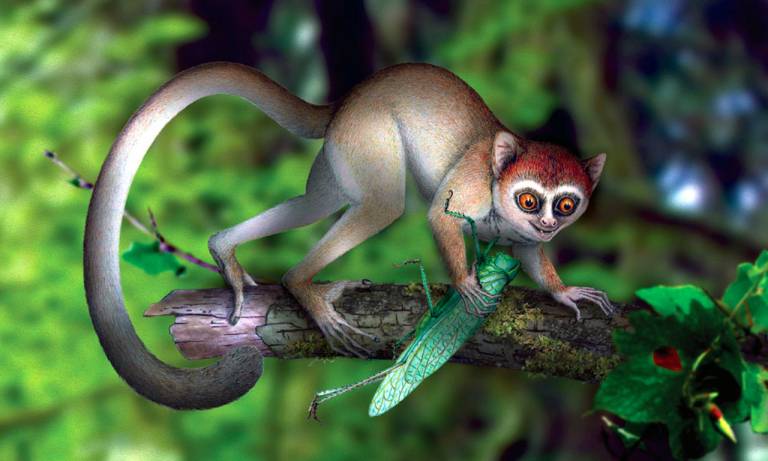Estimating the body size of 57 million year old primates
4 April 2017
Obtaining accurate estimations of the body mass of fossil primates has always been a subject of interest in paleoanthropology because mass is an important determinant for so many other aspects of biology, ecology, and life history.
 This paper focuses on the issues involved in attempting to reconstruct the mass of two early Eocene haplorhine primates, Teilhardina and Archicebus, which pose particular problems due to their small size and temporal and phylogenetic distance from extant primates. In addition to a ranking of variables from more to less useful, the effect of using models of varying taxonomic and size compositions is examined. Phylogenetic correction is also applied to the primate database. Our results indicate that the choice of variable is more critical than the choice of model. The more reliable variables are the mediolateral breadth across the femoral condyles and the area of the calcaneocuboid facet of the calcaneus. These variables suggest a body mass of 39 g (range 33-46 g) for Archicebus and 48 g (range 44-56 g) for Teilhardina. The width of the distal femur is found to be the most consistent estimator across models of various composition and techniques. The effect of phylogenetic correction is small but the choice of branch length assumption affects point estimates for the fossils. The majority of variables and models predict the body mass of Archicebus and Teilhardina to be in the range of the smaller extant mouse lemurs, as expected.
This paper focuses on the issues involved in attempting to reconstruct the mass of two early Eocene haplorhine primates, Teilhardina and Archicebus, which pose particular problems due to their small size and temporal and phylogenetic distance from extant primates. In addition to a ranking of variables from more to less useful, the effect of using models of varying taxonomic and size compositions is examined. Phylogenetic correction is also applied to the primate database. Our results indicate that the choice of variable is more critical than the choice of model. The more reliable variables are the mediolateral breadth across the femoral condyles and the area of the calcaneocuboid facet of the calcaneus. These variables suggest a body mass of 39 g (range 33-46 g) for Archicebus and 48 g (range 44-56 g) for Teilhardina. The width of the distal femur is found to be the most consistent estimator across models of various composition and techniques. The effect of phylogenetic correction is small but the choice of branch length assumption affects point estimates for the fossils. The majority of variables and models predict the body mass of Archicebus and Teilhardina to be in the range of the smaller extant mouse lemurs, as expected.
Estimating body size in early primates: The case of Archicebus and Teilhardina
Marian Dagosto, Daniel Gebo, Xijun Ni, Thierry Smith
DOI: 10.1016/j.jhevol.2017.02.005
 Close
Close

